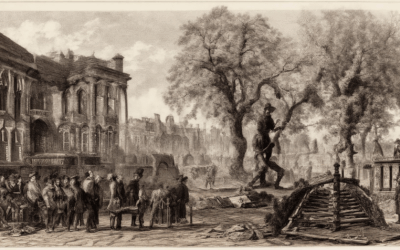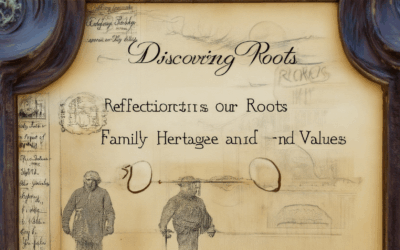The 1960s were a decade of profound change, shaping our world in ways that continue to resonate today. From the iconic events that defined the era to the cultural shifts that reshaped society, the 60s left an indelible mark on history. Many of us cherish childhood memories from the 60s, recalling a time when life moved at a different pace and everyday experiences felt extraordinary. Whether it was the rise of counterculture movements, the birth of iconic music, or the evolution of fashion, the 60s offered a unique blend of innovation and tradition. As we reflect on this transformative period, it’s easy to see how its legacy influences modern culture. But beyond the headlines, there’s something deeply personal about the memories of the 60s—the way they’ve shaped our collective consciousness and continues to inspire new generations.
Key Takeaways
– Outdoor Games and Activities: Kids engaged in physically active and socially bonding games like tag, hide-and-seek, and kickball, promoting fitness and teamwork.
– Imaginative Play: Building forts and participating in Cowboys and Indians fostered creativity and a connection with nature.
– Exploration and Adventure: Road trips, hiking, and camping encouraged curiosity and a deeper appreciation for the natural world.
– Entrepreneurial Spirit: Running lemonade stands taught kids valuable business skills and the joy of serving others.
– Nature and Learning: Collecting plants, rocks, and exploring streams sparked scientific curiosity and a love for discovery.
– Community and Connection: Many activities were community-driven, strengthening relationships with neighbors and family.

What are the 60s remembered for?
The 1960s were a transformative decade marked by significant cultural, political, and technological shifts. Here are some of the most notable contributions and events that define this era:
- The Vietnam War: A contentious conflict that reshaped global politics and American society.
- The British Invasion: Bands like The Beatles revolutionized music and influenced popular culture worldwide.
- Woodstock: A defining moment in music history, attracting half a million fans to a peaceful festival.
- The Apollo 11 Moon Landing: A monumental achievement in the Space Race during the Cold War.
- The Stonewall Riots: A pivotal event in the LGBTQ+ rights movement, sparking the modern fight for equality.
- Civil Rights Movement: Leaders like Martin Luther King Jr. and Rosa Parks fought against racial segregation, inspiring global activism.
- Technological Advancements: The rise of computers, the internet, and early digital technologies laid the groundwork for the digital age.
- Social Movements: The counterculture movement, environmentalism, and feminism gained momentum, challenging traditional norms.
- Pop Culture: Iconic films, fashion, and iconic figures like Marilyn Monroe and Elvis Presley left lasting legacies.
These events and trends continue to shape our world today, influencing everything from technology to social justice.
Life in the 1960s
The 1960s were a transformative decade marked by significant social, cultural, and political shifts. This era saw the rise of civil rights movements, the emergence of the counterculture movement, and the dawn of the digital age. Here’s a detailed look at life during this impactful time:
Society and Culture
- The 1960s were defined by the civil rights movement, with figures like Martin Luther King Jr. leading the charge for equality and justice.
- Women’s rights gained momentum, with iconic moments like the 1963 March on Washington .
- The counterculture movement emerged, promoting peace, love, and anti-establishment ideals, epitomized by figures like Timothy Leary .
- Celebrities like The Beatles and John Lennon became symbols of change and creativity.
Technology and Daily Life
- Computing began to revolutionize daily life with the invention of the Arpanet , the precursor to the modern internet.
- Televisions became a staple in nearly every home, with programs like “I Have a Dream” capturing national attention.
- Movies like “2001: A Space Odyssey” pushed boundaries in storytelling and visual effects.
- Fast food culture took off, with icons like McDonald’s becoming household names.
Economy and Work
- The economy experienced growth, particularly in industries like technology and manufacturing, driven by Sputnik and the space race.
- Minimum wage increases and labor laws started to protect workers’ rights, reshaping the workforce.
- Professional sports became a major entertainment phenomenon, with teams like the New York Yankees dominating baseball.
Politics and Government
- The Kennedys and Johnsons were prominent political figures, with John F. Kennedy and Lyndon B. Johnson leaving lasting legacies.
- The Vietnam War became a defining conflict, shaping global politics and public opinion.
- Civil rights acts and voting rights bills transformed the political landscape, ensuring greater equality for all citizens.
Art and Music
- Rock and roll exploded onto the scene, with bands like The Beatles and The Rolling Stones redefining music.
- Abstract expressionism dominated the art world, with figures like Mark Rothko pushing creative boundaries.
- Dance floors were alive with moves inspired by films like “Dirty Dancing” .
Education and Science
- Higher education expanded, with institutions like Harvard University and Stanford University leading advancements in research.
- The moon landing in 1969 captivated the world, symbolizing human achievement.
- Science fiction literature flourished, with authors like Isaac Asimov inspiring future generations.
Family and Lifestyle
- Suburbs boomed, offering affordable housing and family-friendly communities.
- Television shows like “Leave It to Beaver” and “The Third Man ” reflected changing family dynamics.
- Fashion evolved, with miniskirts and bell-bottoms becoming iconic symbols of the era.
This decade laid the groundwork for many of the societal changes we see today, influencing everything from technology to civil rights. The 1960s were not just a time of change—they were a time of hope and progress, shaping the world we live in now.

What Famous Things from the 60s No Longer Exist?
The 1960s were a decade of significant cultural, technological, and social changes, leading to the rise and eventual decline of many iconic products and phenomena. While some legacy remains, many famous items from this era are now gone, leaving behind fond memories and a sense of nostalgia.
- Toys:
- Chatty Cathy Doll – A talking doll that captured the imagination of children and became a favorite until it was discontinued in the late 70s.
- Wizzzer Spinning Top – Known for its unique design and bright colors, this toy was popular before being replaced by newer models.
- Kenner’s Spirograph – A complex drawing tool that taught kids about geometry through patterns and shapes, now a rare collector’s item.
- Rock ‘Em Sock ‘Em Robots – A mechanical fighting game that inspired a generation of kids to love robotics and engineering.
- Creepy Crawlers – Tiny, insect-like robots that could move and interact with their environment, now considered vintage tech.
- Technology:
- Early Video Games – Arcade games like Pong and Space Invaders dominated arcades in the 60s but are now mostly relics of a bygone era.
- Black-and-White TVs – The iconic cathode ray tube televisions that defined living rooms in the 60s have largely been replaced by flat screens.
- 8-Track Tapes – Once the standard for music and audio, these tapes were eventually overshadowed by the compact disc.
- Music Formats:
- Vinyl Records – While still collectible, the physical medium has been largely replaced by digital downloads and streaming services.
- 8-Track and Cassette Tapes – These formats were popular in the 60s and 70s but are now obsolete due to the rise of digital media.
- Fashion and Accessories:
- Bell-Bottom Jeans – The signature fashion of the 60s is harder to find as stylish options have evolved over the years.
- Moon Boots – Oversized boots with a cushion sole were a staple in 60s fashion but are now rare finds.
- Pop Culture and Media:
- Drive-In Theaters – Once a common sight, these outdoor movie venues have nearly disappeared as indoor theaters took over.
- Party Lines – A relic of the telephone era, party lines connected homes via a shared line, now replaced by modern communication tools.
While these items may no longer be around, they continue to hold a special place in history and remind us of a simpler time. Nostalgia often plays a role in preserving these memories, even if the physical items themselves are gone forever.

What Did Kids Do Outside in the 60s?
During the 1960s, kids enjoyed a variety of outdoor activities that reflected the era’s adventurous and exploratory spirit. Here are some of the things children commonly did:
- Outdoor Games: Games like tag, hide-and-seek, and various ball games were popular. These activities fostered physical fitness and camaraderie among peers.
- Fort-Building: Kids often built forts using materials like branches and sheets, creating imaginative play spaces in the backyard.
- Cowboys and Indians: This role-playing game was a favorite, involving pretend scenarios that highlighted the wild west theme of the time.
- Road Trips: Families took advantage of the freedom of the open road, exploring destinations like national parks and local attractions during summer breaks.
- Hiking: With the rise of environmental awareness, hiking became a popular activity, often combined with camping trips.
- Camping: Spending nights under the stars was a memorable experience, often done in tents or simple sleeping arrangements.
- Exploring Nature: Kids collected plants, rocks, and insects, fostering a connection with the natural world and sparking curiosity.
- Lemonade Stands: Entrepreneurial kids set up stands in driveways or local events, offering fresh lemonade as a refreshing treat.
- Playing in Streams: Activities like building dams and searching for fish were common, reflecting a more carefree approach to childhood.
These activities not only provided entertainment but also contributed to kids’ physical health, creativity, and sense of adventure. They were often community-driven, involving interactions with neighbors and family members, highlighting a simpler, more connected lifestyle.
What Did Kids in the 1960s Do for Fun?
The 1960s were a decade filled with iconic toys and activities that captured the imagination of children. Here are some of the popular things kids enjoyed doing:
Toys and Games
- Space Hoppers : Inspired by the space race, these bouncy toys were a hit among kids.
- Etcet Sketch : A portable drawing toy that allowed kids to create their own artwork.
- Dolls : Barbie and Sindy were among the most popular dolls, often dressed in trendy outfits.
- Board Games : Monopoly, Scrabble, and Cluedo were favorites for family game nights.
- Model Kits : Building models of cars, planes, and ships was a popular pastime.
Outdoor Activities
- Red Rover : A game where two teams tried to “pull” a rope across a designated line.
- Hide and Seek : A classic game that involved hiding and seeking in various places around the neighborhood.
- Kickball : A mix of soccer and baseball, played with a rubber ball and a bat.
- Catch the Lady : A game where one player stands guard while others try to tag them.
Art and Creativity
- Crayola Crayons : Coloring books and art projects were a big part of playtime.
- Magnifying Glasses : Exploring nature and insects was a popular outdoor activity.
- Science Kits : Sets that taught kids about chemistry, biology, and physics.
Fashion and Style
- Dressing Up : Kids would often create elaborate outfits using clothing from home.
- Accessories : Wearing scarves, hats, and jewelry added to the fun.
- Barbie Tea Parties : Imaginary tea parties with Barbie and her friends were a big hit.
Education and Exploration
- Nature Walks : Carrying a small notebook and pencil to document findings.
- Astronomy : Looking at stars and planets through basic telescopes.
- Geology : Collecting rocks and minerals to learn about different types.
The 1960s offered a unique blend of simple yet memorable experiences that shaped childhoods full of joy and curiosity.”

Did Kids Go to School in the 1960s?
Yes, kids did attend school in the 1960s, and the educational landscape during that decade was marked by significant changes and developments. Here are some key points about education in the 1960s:
- Expansion of Higher Education : During the 1960s, colleges and universities saw a surge in enrollment, driven by the Baby Boom generation. This period also witnessed the rise of graduate programs and the establishment of new institutions.
- Impact of the Civil Rights Movement : The Civil Rights Movement influenced education by promoting the importance of diversity and equality in schools. This led to a reevaluation of how American history was taught, emphasizing civil rights and social justice themes.
- Technological Advancements : The introduction of computers and new teaching tools began to transform classrooms. While these technologies were still in their early stages, they laid the groundwork for modern educational methods.
- Changing Roles of Teachers : The 1960s saw a shift in the role of teachers, with many moving from traditional lecture-based instruction to more interactive and student-centered approaches.
- Challenges and Controversies : The decade also brought challenges, such as funding issues and debates over school integration, prayer in schools, and curriculum decisions.
- Cultural Influences : The counterculture movement of the 1960s impacted education by challenging traditional norms and promoting alternative learning methods.
Overall, the 1960s were a transformative era in education, shaping the foundation for the modern school system we see today. From technological innovations to social movements, these changes had a lasting impact on how children learned and grew during this pivotal time.



0 Comments